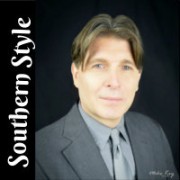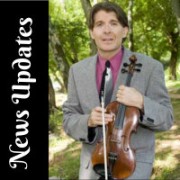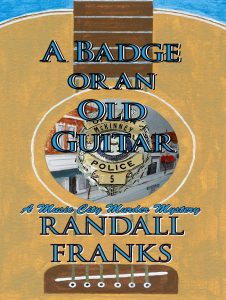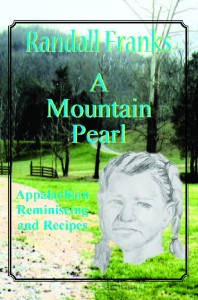A privy and some plums
The gentle falling of snowflakes takes me back to the days when cold weather would bring a tough decision at the old family homestead.
Being cold in the winter was a common experience, since the only heat came from a fire in the main room. Grandma would always be the one up early to get the fire going before anyone else was out from under their warm down covers.
Sometimes in the middle of the night, the call of nature would come upon me. Unlike our house in town, where the bathroom was only about 15-feet down the hall, I was faced with a decision to make a 20-yard dash to the outhouse or simply utilize the chamber pot.
Most would use the chamber pot. But for some reason as a kid, even when the temperature dipped into the teens, I would push myself to put on my old black leather work boots and my brown quilted coat with the hood and make the trek up to the old white pine outhouse.
It wasn’t a very fancy building, much like those depicted in so many arts and crafts designs. The lumber from which it was made was hewn by hand and weathered by years of use. A simple wood latch kept critters from wandering in there with you. It wasn’t always successful, however.
I remember one time my little cousin, Wilbur, was making use of the facilities. Wilbur wasn’t very tall for his age. With his small frame I wonder how he managed not to fall in, I had trouble myself when I was young. After a few minutes in there, he ran out pulling up his britches, claiming there was a creature attacking him from underneath like the monster from the black lagoon. After investigation, we discovered that it was a two-legged dominicker from the hen house which apparently had decided to peck more than the ground.
In the summer, without air-conditioning, evenings were spent sitting on the front porch to catch a breeze to ease the heat which built in the house throughout the day. A trip to the old privy would find many types of crawly and flying critters, although they seldom bothered me except for an occasional sting. I seem to remember that happening one time. I then spent the rest of the day with a Bruton Snuff poultice attached to whatever part of my body the critter stung.
While I can reminisce fondly about trips to that quaint little building, as someone who was raised in the city, I must say that with the exception of the great solitude of the outhouse amidst God’s great outdoors, I did much prefer modern porcelain versions.
However, when the plums come in, I often wish I could take a trip back to the outhouse. About 20-feet beyond it was a red plum tree that often required my attention. I just loved making a trip out there to eat my fill.
Of course, my mother and grandma would warn me to stay out of the plums. “If you eat too many, you will get sick,” they would say, and they were right.
If I spent an hour up that plum tree, I would spend most of the next day about 20 feet away.
Thankfully, I never got a visit from the dominicker from beneath.
From Randall Franks’s “A Mountain Pearl: Appalachian Reminiscing and Recipes.”


 In addition, listeners can sit back and enjoy a NEW audio book narrated by Bill Anderson. The audio book bundle also includes a Bonus CD featuring 10 never-before released self-penned acoustic recordings by Anderson, including smash hits like “Whiskey Lullaby” (Brad Paisley/Alison Krauss), “Give It Away” (George Strait), “City Lights” (Ray Price) and seven more.
In addition, listeners can sit back and enjoy a NEW audio book narrated by Bill Anderson. The audio book bundle also includes a Bonus CD featuring 10 never-before released self-penned acoustic recordings by Anderson, including smash hits like “Whiskey Lullaby” (Brad Paisley/Alison Krauss), “Give It Away” (George Strait), “City Lights” (Ray Price) and seven more. Traywick — now known as Randy Travis. He signed Kenny Chesney to his first songwriting deal and negotiated his first record contract with Capricorn Records. Songwriters Monk has signed “off the street” include Marcus Hummon, Holly Dunn, Jim McBride, Keith Stegall, Aaron Tippin and Philip Douglas.
Traywick — now known as Randy Travis. He signed Kenny Chesney to his first songwriting deal and negotiated his first record contract with Capricorn Records. Songwriters Monk has signed “off the street” include Marcus Hummon, Holly Dunn, Jim McBride, Keith Stegall, Aaron Tippin and Philip Douglas.




 Award-winning
Award-winning 
 “A Mountain Pearl” follows the adventures of a young, Appalachian girl as she grows up in the secluded valley below the Gravelly Spur Mountain during the Great Depression. She and her family and friends experience the ups and downs of pioneer life in a beautiful valley almost forgotten by time. The stories were inspired by Pearl Franks — late mother of Hall of Fame music legend and actor Randall Franks, who played “Officer Randy Goode” on the television series “In the Heat of the Night.” Illustrated by award-winning artist Cathy Cooksey, the collection includes 39 authentic mountain recipes and 55 country funnies sure to bring a laugh.
“A Mountain Pearl” follows the adventures of a young, Appalachian girl as she grows up in the secluded valley below the Gravelly Spur Mountain during the Great Depression. She and her family and friends experience the ups and downs of pioneer life in a beautiful valley almost forgotten by time. The stories were inspired by Pearl Franks — late mother of Hall of Fame music legend and actor Randall Franks, who played “Officer Randy Goode” on the television series “In the Heat of the Night.” Illustrated by award-winning artist Cathy Cooksey, the collection includes 39 authentic mountain recipes and 55 country funnies sure to bring a laugh. One of those is country chart-topper Sylvia is who will release her new CD It’s All in the Family in early October. The 12-song album was produced by Sylvia and her longtime collaborator John Mock.
One of those is country chart-topper Sylvia is who will release her new CD It’s All in the Family in early October. The 12-song album was produced by Sylvia and her longtime collaborator John Mock. “What an incredible honor it is for me to be inducted into the Musicians Hall of Fame,” says
“What an incredible honor it is for me to be inducted into the Musicians Hall of Fame,” says 